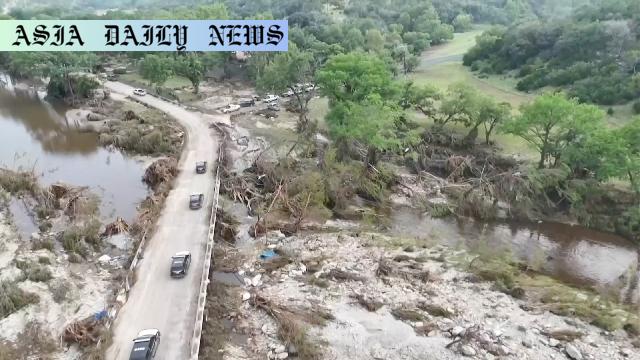Texas Flooding: Torrential downpours lead to over 70 fatalities, with children among the dead. Authorities continue search for the missing.

Catastrophic Flooding Strikes Texas
The state of Texas is mourning the loss of at least 70 people who died in severe flooding caused by relentless downpours. The unexpected and intense rainfall struck in the early hours of Friday, particularly affecting areas along the Guadalupe River. This resulted in a flood emergency, leaving many residents with minimal time to evacuate or seek safety. Tragically, Kerr County bore the brunt of the disaster, with 59 confirmed deaths, including 21 children. Other counties were also affected, further contributing to the rising death toll. Emergency responders continue their tireless efforts to locate missing individuals, holding out hope of finding survivors amid the chaos.
Understanding the Sudden Onset of Disaster
The torrential rain struck with such rapidity and intensity that many residents were caught entirely off guard. Authorities report that the rain began in the middle of the night, with rivers and streams swelling dangerously in mere moments. Many townspeople were trapped in their homes as the waters inundated streets and buildings. Some survivors have shared harrowing accounts of waking up to the sound of rushing water, only to realize they had little time to escape the rising tide. The rain not only claimed lives but also led to widespread destruction, displacing families, damaging infrastructure, and leaving a trail of devastation in its wake.
Federal Assistance and Community Resilience
Recognizing the severity of the situation, US President Donald Trump declared a Major Disaster for Kerr County on Sunday. This move paves the way for federal aid and resources to be funneled to impacted communities. In his announcement, the president expressed his commitment to collaborating with local officials to ensure adequate support for recovery efforts. Meanwhile, community volunteers and non-profits have mobilized to provide essential services, from distributing food and clean water to offering temporary housing. The disaster has also sparked discussions about improving flood response mechanisms and emergency preparedness to prevent such tragedies in the future.
Lessons Learned from this Tragedy
The Texas flooding serves as a grim reminder of the unpredictability and destructive power of extreme weather events. Climate experts have noted that incidents like this may become more frequent in the coming years due to changing global climate patterns. Policymakers are being urged to invest in resilient infrastructure, flood mitigation strategies, and comprehensive warning systems to safeguard communities. The tragedy has also highlighted the importance of community cohesiveness and the unyielding spirit of those who step up in times of crisis to support their neighbors. As Texas begins the arduous process of recovery, the need to draw lessons from this disaster and prepare for a safer future remains paramount.
Commentary
A Time of Tragedy and Reflection
The recent flooding in Texas is both heartbreaking and a stark reminder of nature’s overwhelming force. It is difficult not to feel a sense of helplessness when confronted with news of such a massive loss of life, including the tragic deaths of 21 children. For the affected families, the pain of losing loved ones is immeasurable, and words alone cannot convey the depth of this tragedy. One cannot help but imagine the sheer terror the victims faced in their final moments as the waters rose unstoppable.
The Importance of Preparedness and Resilience
This catastrophe also underscores the importance of disaster preparedness and the need for robust warning systems. While some natural disasters strike suddenly and without warning, there are steps that communities and governments can take to mitigate risks and save lives. Investment in flood-resistant infrastructure, early warning mechanisms, and community education is essential. The speed of response and the availability of resources undoubtedly make a difference in saving lives and ensuring that those impacted can recover more swiftly. This tragedy should serve as a wake-up call for authorities to prioritize disaster management policies and strategies in an age of unpredictable weather patterns.
A Call to Support and Solidarity
Amid the heartbreak, it is heartwarming to see communities banding together to support one another. Volunteers, first responders, and relief organizations are working tirelessly to aid those affected, risking their own safety to provide care and assistance. Their dedication serves as a beacon of hope in dark times and reminds us all of the power of compassion and collaboration. As the state of Texas begins its recovery journey, it is incumbent upon all of us to extend support, whether through donations, raising awareness, or simply offering words of encouragement. Together, we can help rebuild what has been lost and honor the memory of those who perished in this tragic event.


